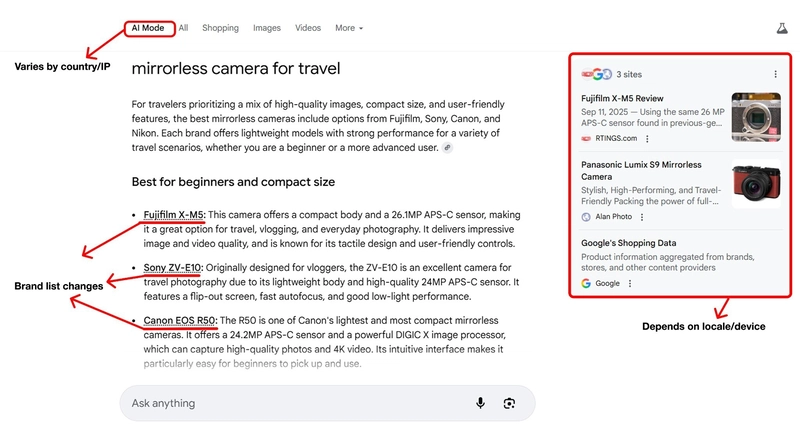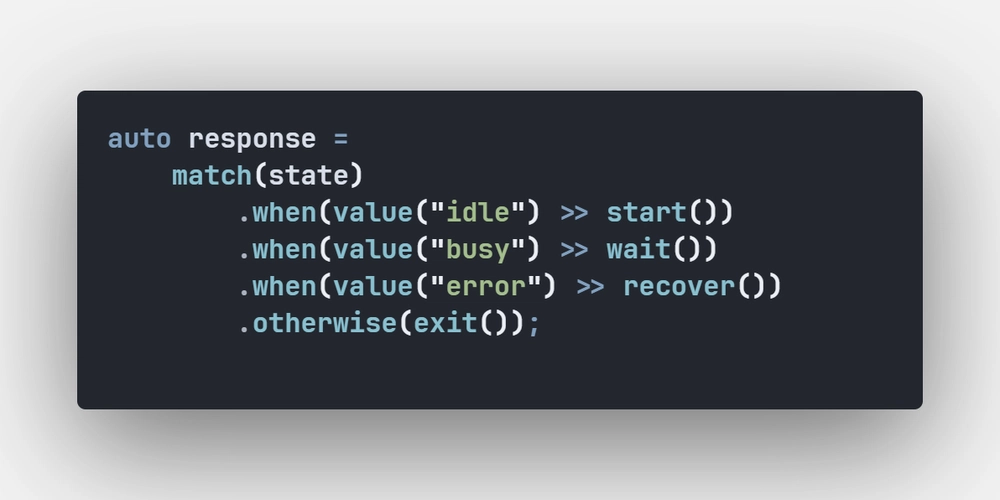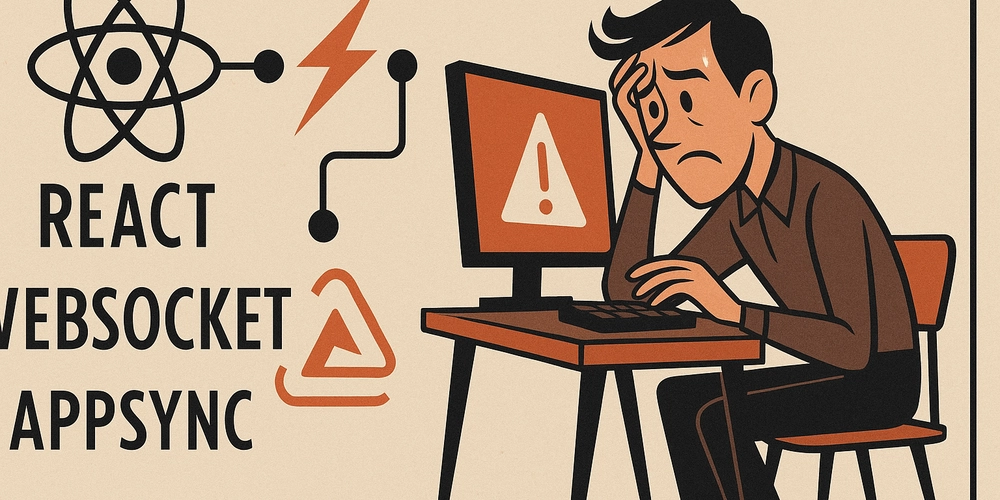Search engine monitoring measures what users see in each locale. SERPs differ by location, language, device, and settings; AI Overviews/AI Mode further change page composition and above-the-fold real estate.
Proxies provide controlled vantage points to reproduce those conditions. Use datacenter, residential, ISP (static residential) or mobile IPs as needed; rotate for page-one sampling and keep sticky sessions for pagination and stable local packs.
Work within platform terms and anti-automation controls. Prefer official channels (Search Console, Programmable Search JSON API) where applicable; for observational checks, pair proxies with realistic browsers and capture organic, local, ads, and AI sections.
Why Proxies Matter for Search Engine Monitoring in 2025
Google’s results are not universal. Composition and ranking change with location, language, device, and settings, and 2025 rollouts of AI Overviews / AI Mode further alter what appears above the fold. A snapshot from a single office IP or VPN cannot represent what users in another city or on another device see. To measure real visibility, teams need controlled vantage points that reproduce user context per locale and device—i.e., proxies with predictable geo and network traits.
Operationally, this means standardizing the viewing environment you measure fix UI language and SafeSearch, emulating the intended device (desktop vs. mobile) and route requests through country/city-targeted IPs that reflect the audience you care about. Without the correct IP and device profile, “page-one” and “above-the-fold” metrics are distorted, because AI surfaces can occupy primary screen real estate and push the first organic result downward (Google Help).
Monitoring should explicitly capture both classic SERP modules (organic results, local packs, ads) and AI surfaces (presence/absence of AI Overview, entities/links it promotes, citations shown). Treat the screenshot checklist as your capture spec: detect whether AI Overview renders (①), persist the items it recommends (②) and record ancillary modules in the right rail that vary with locale/device (③). Proxies are therefore not a growth hack; they are baseline instrumentation to audit what real users see in each market while keeping the environment reproducible and auditable.
Proxy Options & Sessions: Datacenter, Residential, ISP, Mobile; Rotating vs. Sticky
When selecting proxies for SERP observation, evaluate them as capabilities across seven dimensions: IP origin, detectability, stability, cost, geo-targeting, session behavior and fit for monitoring tasks. The matrix below summarizes those trade-offs and is intended to be read while following this section:
Sessions control state. Rotating assigns a new IP per request—best for breadth and minimal fingerprint persistence. Sticky holds the same IP for a defined window (commonly ~5–10 minutes or until idle) via vendor session IDs or sticky ports; Mobile/ISP pools are usually sticky by default, while Datacenter/Residential can be run in either mode. Sticky is required for pagination, “More results” or keeping a local pack constant across interactions.
Apply a simple rule: pick the least-detectable pool that meets your geo precision and session needs. For city fidelity or stable local modules, prefer Residential (Sticky) or Mobile; for economical breadth with country accuracy, Datacenter (Rotating) suffices; for durable identity without mobile costs, use ISP/Static (Sticky). The table encodes these choices so teams can standardize configurations instead of tuning by trial and error.
Beyond Traditional Search – Proxies for SEO and GEO
Compliance & Official Alternatives You Should Not Ignore
- Google ToS & robots.txt. Google’s Terms prohibit using automated means to access content in conflict with machine-readable instructions (e.g., robots.txt) and historically warned against “automated querying” to determine ranking. Practically: scraping google.com without permission risks violating contractual terms. Always honor robots.txt, rate-limits, and product-specific policies. (policies.google.com)
2. Sanctioned Google access.
• Programmable Search (Custom Search) JSON API — paid, permissioned access to your configured search engine(s); not a general Google Search API. Pricing: $5 per 1,000 queries, 100 free/day, hard cap 10k/day per project. Use for programmatic querying within its scope.
• Google Search Console (UI/API) for your own site only. As of 2025, the API exposes hourly data for ~10 days (plus daily aggregates), including documented metrics such as position, queries, pages and countries. Prefer this for ranking/visibility analysis of your properties.
3. Microsoft/Bing transition. Bing Search APIs retire on 11 Aug 2025. Microsoft directs customers to Azure AI Agents with Grounding with Bing Search as the migration path. Teams relying on Bing’s legacy endpoints should plan replacement now.
Bottom line: use official channels where they cover the use case; if observational SERP checks are necessary, implement legal review, respect robots.txt, and isolate them from any systems that must remain strictly ToS-compliant.
Implementation Playbook: Locale & Device Repro, Anti-Bot Realism, and What to Capture
Reproduce user context first. Fix language and region parameters (e.g., hl, location), keep a signed-out baseline and set SafeSearch explicitly. Drive requests through proxies that match the audience’s country—and city when local packs matter—then emulate the intended device: viewport/DPR, client hints or a stable UA and realistic mobile bandwidth. Without this, “page one” and above-the-fold metrics skew, especially where AI Overviews/AI Mode reshuffle layout.
Choose proxy and session behavior to match the task. Use datacenter (rotating) for economical, broad Page-1 sampling at country level. Use residential or mobile for city fidelity and tougher locales; keep sticky sessions to preserve state across pagination and “More results.” ISP/static residential sits between—durable identity at country level without mobile costs. Log proxy metadata on every run (IP, ASN, country/city, session ID, stickiness window) so results are auditable.
Render like a real browser and respect controls. Run a modern Chromium/WebDriver-BiDi/Playwright stack instead of raw HTTP and expect defenses such as Cloudflare Bot Management and reCAPTCHA Enterprise. Keep interaction pacing human-like, cap concurrency, warm sessions before deep navigation and back off on challenges rather than forcing solves. Separate any observational pipelines from systems that must remain strictly ToS-compliant; enforce robots.txt and product-specific policies upstream.
Capture what affects visibility and makes it measurable. Persist the viewport-1 screenshot and a full HTML/DOM snapshot; record presence and positions for AI Overview/AI Mode, ads (top/bottom), local pack, organic and right-rail modules. Define scoring rules that account for AI displacement (e.g., “visible in viewport-1” vs. “rank index including AI”). Sample per locale×device on a fixed cadence and validate directionally against your own site’s Google Search Console data (hourly/daily). Version all configs, store artifacts with manifests, and keep running reproducible end-to-end.
Astro — On the Top of Geo-Targeted Proxy Services in 2025
*Citations: *
[1] Google Help — Why your Google Search results might differ (lists location, language, device as variation factors).
[2] Google Help — Understand & manage your location when you search (how location is determined/used).
[3] Google Policies — How Google uses location information (sources incl. IP/device).
[4] Google Blog — Expanding AI Overviews and introducing AI Mode (Mar 5, 2025).
[5] Google Blog — AI Mode adds agentic features & expands (Aug 21, 2025).
[6] Google Terms of Service — prohibition on using automated means contrary to robots.txt.
[7] Google Developers — robots.txt intro (machine-readable instructions).
[8] Google Developers — Custom Search JSON API (pricing/limits). [9] Google Developers — Search Analytics API now supports hourly data (Apr 2025).
[10] Microsoft Learn — Bing Search APIs retirement (Aug 11, 2025). l
[11] Cloudflare Docs — JA3/JA4 fingerprint (fingerprinting in Bot Management).
[12] Cloudflare — Bot Management product page (ML, behavior, fingerprinting).
[13] Google Cloud — reCAPTCHA Enterprise quotas (rate/usage controls).
[14] Oxylabs Dev Docs — Session Control (sessid; default ~10-min or idle timeout).
[15] Oxylabs Dev Docs — Sticky proxy entry nodes (same IP up to ~10 minutes).
[16] Bright Data Proxy Manager — session header (x-lpm-session to persist IP).
[17] Oxylabs — ISP vs Residential proxies (2025) (type definitions, detectability trade-offs).





